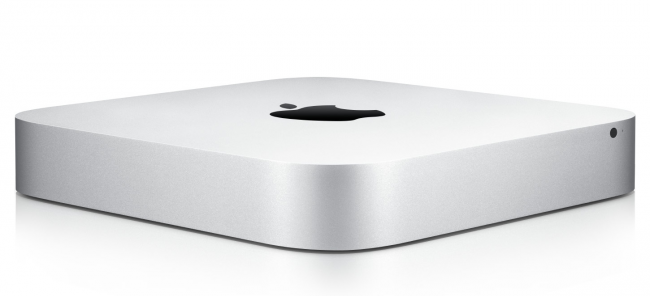The Apple Mac mini has long been the cheapest way to own a Mac. Since its introduction in January 2005, the small form factor desktop Mac has offered a low-cost alternative to the all-in-one iMac or the high-end Mac Pro.
Although it’s sold without a keyboard, mouse or screen, everything else you need is in the box. It’s internet-ready, through Ethernet or wireless N, and comes with OS X 10.8 Mountain Lion and all its bundled apps pre-installed.
No ad to show here.
The 2012 generation Mac mini is based on an aluminium unibody design. It’s available in two models. The cheaper one has a 2.5GHz dual-core Intel Core i5 processor and a 500GB hard drive, and costs £499 in the UK, AU$699 in Australia or US$599 in the US.
The more expensive late 2012 Mac mini reviewed here has a 2.3GHz quad-core Intel Core i7, a 1TB hard drive and costs £679/AU$899/US$799. Both models offer 4GB of onboard RAM.
There’s also a server version of the high-end model, which includes the server edition of Mountain Lion and twin 1TB hard drives, for £849/AU$1,099/US$999.
At just 19.7cm (7.7 inches) long and wide, 3.6cm (1.4 inches) tall and weighing only 1.22kg (2.7lbs), it’s comfortably transportable.
If you want to use the same computer at home and at work, for example, you can set up a keyboard, mouse and monitor at each, and then when you’re ready to leave, unplug the Mac mini and slip it in your bag.
Since the mid-2010 refresh, the Mac mini’s transformer has been built into the body, so the power supply is a cheap figure-of-eight lead.
The Mac mini lost its optical drive with the previous generation, in the summer of 2011, and unsurprisingly, it doesn’t make a return here. If you want to use CDs, DVDs or Blu-ray discs, you have to buy an external device such as Apple’s own USB SuperDrive, or if you also have computer with an optical drive fitted, a Remote Disc.
The step up in processors, from the second generation Sandy Bridge chips to the new third-gen Ivy Bridge CPUs, bring a welcome increase in power. Their integrated Intel HD Graphics 4000 chipset is around 60% more powerful than the Intel HD Graphics 3000 used in second-generation Core-i processors.
Unfortunately, the discrete graphics chip that made its Mac mini debut in last year’s high-end model has now gone, so both 2012 Mac minis rely solely on integrated graphics. This is annoying, considering making room for the discrete chip was given as a reason for dropping the optical drive.
Review from Techradar.com and is published with permission. Continue the review here.
